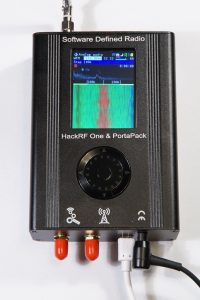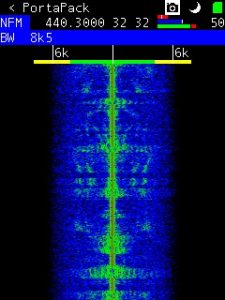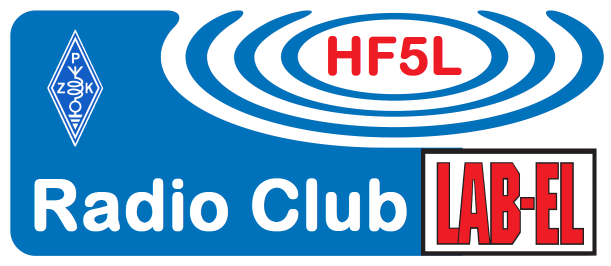 Chinese manufacturers have recently specialized in providing interesting and cheap radio toys, which are clones of open-source projects. An example, next to the recently popular NanoVNA analyzer, is the HackRF micro-transceiver offered with the PortaPack panel, which allows you to conduct various radio experiments.
Chinese manufacturers have recently specialized in providing interesting and cheap radio toys, which are clones of open-source projects. An example, next to the recently popular NanoVNA analyzer, is the HackRF micro-transceiver offered with the PortaPack panel, which allows you to conduct various radio experiments.
HackRF is a SDR (Software Defined Radio) module that contains transceiver working in half-duplex mode in the frequency range from 1 MHz to 6 GHz with programmable output power from -10 dBm to 15 dBm, antenna SMA socket and external clock SMA sockets (input and output). The module has a number of internal connectors useful for experiments: GPIO, SDIO, I2C, I2S, UART, RTC, ADC, DCA, CLK.
An additional “sandwich” PortaPack panel is equipped with a color LCD touch screen, manipulator (rotary knob with selection buttons), headphone jack and micro SD card slot for additional software. The latest version from 2019 has been equipped with a real-time clock with a backup battery and a reference standard generator TXCO 0.5 ppm with temperature compensation.
The whole toy was placed in an aluminum housing with dimensions of 125 x 90 x 40 mm. The device requires external 5V power supply (e.g. from PowerBank) connected via a micro-USB socket.
 Different versions of this device are available on AliExpress and another shops. The basic software allows the reception of emissions: AM, NFM and WFM with graphic visualization with a waterfall. HackRF mode launches the device to work with an external SDR program on a PC (from Windows or Linux) or with a smartphone (e.g. RF Analyzer for Android), which allow you to make various radio experiments, presented for example in many videos on Youtube.
Different versions of this device are available on AliExpress and another shops. The basic software allows the reception of emissions: AM, NFM and WFM with graphic visualization with a waterfall. HackRF mode launches the device to work with an external SDR program on a PC (from Windows or Linux) or with a smartphone (e.g. RF Analyzer for Android), which allow you to make various radio experiments, presented for example in many videos on Youtube.
The HackRF kit from PortaPack will not replace an amateur radio because the input sensitivity is worse than a typical amateur receiver and varies depending on the band, and the output signal strength is at the level of milliwatts, however the operating frequency range up to 6 GHz is impressive. Thanks to the open software and published technical documentation, the device has great educational value. I wonder if it works as a transceiver for satellites, e.g. Es’hail-2? Write please if you know the practical application of this toy in ham-radio application.
Open source HackRF software is published on the GitHub project website, where documentation, support and source code can be found.
On OneSDR.com and CWtouchKeyer.com, the HackRF transceiver has been named “The Best Software-Defined Radios (SDRs) for 2020” … We look forward to hearing your feedback!

Number of Comments: 1
An obligatory topic during QSO via QO-100 is the exchange of information about the equipment used. The most common names are SG-Labs, DXPatrol, Pluto, Kuhne. HackRF one is rare, but it also meets. I have the impression that this platform is very interesting, but not so popular and not the latest. PortaPack can breathe new life into it.
Miro SP5GNI